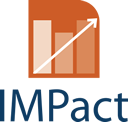Different type of intervention and related measures
Without supporting policies, a substantial proportion of PHS transactions would take place in the undeclared market. When a country is considering introducing a supporting policy, the first crucial choice is the selection of the main type(s) of intervention that will be implemented. The main type(s) of intervention can be linked to the main objectives of the measure. On the basis of this selection, specific related measures could be chosen.
The measures selected will specifically target the demand and/or supply side of the market. However, even if the first direct effects of a measure will be on only one side of the market, the measure might indirectly affect the other side too. Historically, there was a trend for care activities policies to favour a supply-side approach (relatively high importance of skills, quality assurance) and for non-care activity policies to favour a demand-side approach. However, it appears that policies often combine both supply- and demand-side support (service vouchers in Belgium, for example).
The table below provides a general overview of the main types of intervention that can be selected, along with their possible related measures and objectives.
| Types of intervention | Possible measures | Main types of objectives |
| Price reductions for users | Tax deduction/exemption | Objective 1: Employment creation
Objective 2: Reducing undeclared work Objective 4 and 5: improving access to child and elderly care Objective 6: Gender equality and work-life balance |
| Direct settlement system (support for users received in advance or at time of purchase) | ||
| Social subsidies whether provided through cash payments or near cash payments; social vouchers; in-kind benefits | ||
| Financial help from users’ employers | ||
| Fostering/opening to competition | ||
| Cost reductions for providers | Subsidies to suppliers | Objective 3: Fostering/development of PHS activities |
| reduction in VAT rates | ||
| Employers’ contribution exemptions | ||
| Increase in the attractiveness of formal PHS (besides quality and price) | Communication campaigns to raise awareness of the illegality and dangers of undeclared work | Objective 2: Reducing undeclared work |
| Communication campaigns to promote the formal system | ||
| Increase in the quality of services | Accreditation | Objective 7: Better working conditions and health and safety provisions for PHS workers |
| Standards | ||
| Training requirements | ||
| Improving the supply of services | New regulations on employment (e.g. new employment status) | Objective 3: Fostering/development of PHS activities
Objective 7: Better working conditions and health and safety provisions for PHS workers |
| Professionalisation: training, working conditions, skills recognition | ||
| Indirect policy: immigration policies | ||
| Improvement in accessibility and in matching demand and supply | Opening up competition (i.e. enabling entry of new companies) | Objective 3: Fostering/development of PHS activities |
| Digitisation of the system (i.e. easing online transactions between users and services providers) |






